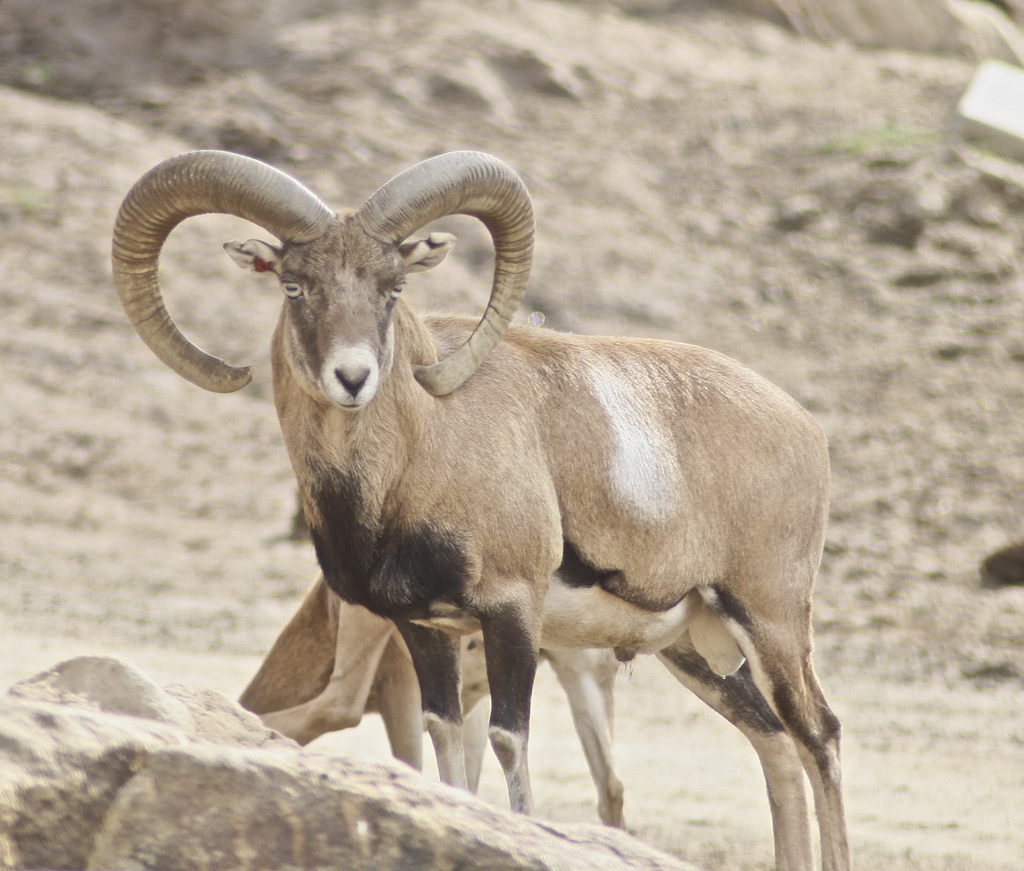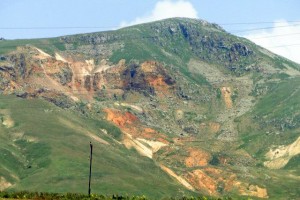Armenian mouflon: Red Data Book of Armenia

Cattle, antelopes and goats - Bovidae
Status. Listed in the Red Data Book of the former USSR. Listed in the IUCN Red List of Threatened Species (ver. 3.1) as Vulnerable VU A2cde. According to IUCN criteria categorized as Endangered EN D.
Distribution. The subspecies is distributed in Nakhichevan, Armenia and Northwestern Iran, southwards to the Lake Urmia. Before the mid–20th century, the Caucasian and Iranian parts of the population were interconnected due to animal migrations across the Arax River. Afterwards, these movements were discontinued because of fortification of borderline infrastructure.
Distribution in Armenia. The range encompasses the Urts Ridge (Ararat Province), Vayots Dzor Ridge (vicinities of the Aghavnadzor, Khndzorut, Martiros and Bardzruni villages, Vayots Dzor Province), Bargushat and Zangezur ridges (to the south of Dastakert town, Syunik Province).
Habitats. Arid mountain grasslands with juniper and almond scrublands (Urts Ridge), subalpine and alpine meadows (Vayots Dzor and Syunik provinces). Prefers open spaces alternating with rocky outcrops and canyons at 1000–3000 m above sea level. In Armenia mouflons reside constantly, do not move away in winter and in the hot season are replenished by males immigrating from Nakhichevan.
Biological traits. The rutting season lasts from late November to early December, lambs (usually twins) are born in mid–May to early June.
Population size and its trends. Up–to–date studies show that the mouflon population in Armenia does not exceed 250–300 individuals. Most of animals (maximum 200) live on the Bargushat and Zangezur ridges.
Major threats. Poaching, land encroachment, mining, habitat destruction and overgrazing.
Conservation measures. Protected in Zangezur Sanctuary and Arevik National Park. Armenian branch of WWF assists to enforcement of protected areas within the mouflon range. It is essential to strengthen anti–poaching efforts and to enforce conservation activities.
Suggestions
 The Ministry of Environment sent a letter international partners to draw their attention to the real danger of environmental disasters as a result of Azerbaijan's large-scale aggression towards the territory of Armenia
The Ministry of Environment sent a letter international partners to draw their attention to the real danger of environmental disasters as a result of Azerbaijan's large-scale aggression towards the territory of Armenia
 Launch of Amulsar Construction Is End to Little Armenian Switzerland-Jermuk
Launch of Amulsar Construction Is End to Little Armenian Switzerland-Jermuk
 According to Nature Protection Ministry RA, Emissions 'Pure Iron' CJSC and 'Armenian Titanium Production' LLC within Standards
According to Nature Protection Ministry RA, Emissions 'Pure Iron' CJSC and 'Armenian Titanium Production' LLC within Standards
 Vicia pisiformis: Red Data Book of Armenia
Vicia pisiformis: Red Data Book of Armenia
 Vavilovia formosa: Red Data Book of Armenia
Vavilovia formosa: Red Data Book of Armenia












